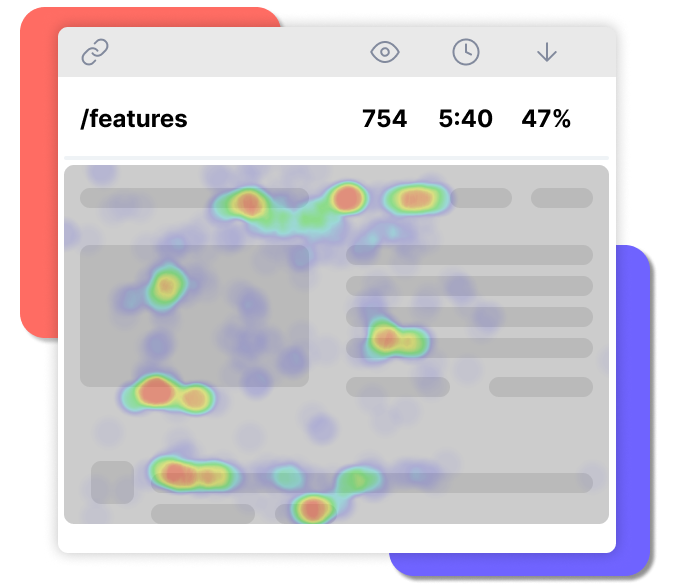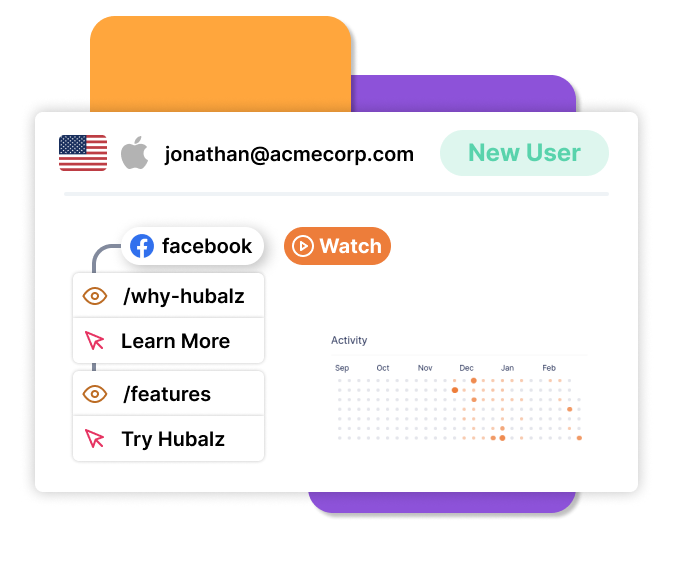When it comes to running a successful website, it’s not enough to simply launch it and hope for the best. To truly optimize your website and achieve your business goals, you need to understand how visitors are interacting with it. This is where data-driven web analytics comes in. By tracking user behavior and gathering insights, you can make informed decisions about how to improve your website and better meet the needs of your audience. One effective approach to data-driven web analytics is visitor-led analytics, which focuses on understanding the website visitor journey and optimizing it for maximum engagement and conversions. In this post, we’ll explore the importance of website optimization and data-driven web analytics, and dive into the benefits of a visitor-led approach. We’ll also highlight a powerful tool that can help you implement visitor-led analytics on your website.
What is Data-Driven Web Analytics?
In today’s digital age, web analytics has become an integral part of running a successful online business. Data-driven web analytics is a powerful tool that provides insights on website performance, user behavior, and engagement metrics. Data-driven decision-making is essential for website optimization because it allows website owners to identify areas that require improvement and make informed decisions based on the data collected.
Data-driven web analytics can be categorized into three main types: descriptive, diagnostic, and predictive. Descriptive analytics help in understanding what has happened on the website and provide historical data on visitor behavior. Diagnostic analytics focus on identifying why something has happened, and can help diagnose problems on the website. Predictive analytics, on the other hand, use past data to make predictions about future outcomes.
While traditional web analytics provides valuable insights, visitor-led analytics is an effective approach that focuses on understanding visitor behavior and using that knowledge to optimize the website. By tracking visitor actions and analyzing visitor journeys, visitor-led analytics provides a more comprehensive understanding of how visitors interact with the website. This understanding can then be used to create personalized experiences, improve user engagement, and increase conversion rates.
Understanding Visitor-Led Analytics
Website optimization is all about delivering a better user experience. And to improve user experience, you need to understand user behavior. This is where visitor-led analytics comes into play.
Visitor-led analytics refers to the approach of understanding website user behavior by analyzing data from user interactions. This approach is driven by the belief that users should lead the way for website optimization. Rather than just relying on assumptions or guesswork, visitor-led analytics helps you to make data-driven decisions that are based on real user behavior.
Visitor-led analytics provides deep insights into user behavior, such as how users navigate the website, which pages they spend the most time on, which areas they click on the most, and where they drop off. This data can be used to optimize the website for better user experience.
There are several types of visitor-led analytics, including heatmaps, session recordings, and visitor journey tracking. Heatmaps provide a visual representation of user interactions on a page, indicating where users click and how far they scroll down. Session recordings allow you to see exactly how users navigate the website, where they get stuck, and where they drop off. Visitor journey tracking shows the different stages of the user journey, from the first visit to conversion.
Visitor-led analytics is crucial for website optimization. By understanding user behavior, you can optimize the website to provide a better user experience and increase conversions. With visitor-led analytics, you can make data-driven decisions that will help you achieve your website goals.
Hubalz is a powerful tool that can help you with visitor-led analytics. It offers heatmaps, session recordings, and visitor journey tracking, which can help you to gain a deeper understanding of user behavior on your website.
Benefits of Visitor-Led Analytics for Website Optimization
As the online world continues to evolve and customer expectations change, it has become more important than ever to have a website that offers a seamless and intuitive user experience. Data-driven web analytics provide insights that can help you optimize your website for your audience. However, visitor-led analytics, in particular, can offer a deeper understanding of user behavior and help you make more informed decisions to improve the overall user experience.
By leveraging visitor-led analytics, you can gain a greater understanding of how visitors interact with your website. This type of analytics is crucial for understanding user behavior and identifying areas for improvement. It allows you to see the site from the perspective of your visitors and can help you identify issues that might not be immediately apparent.
Improving the user experience is crucial for any website, and visitor-led analytics can help you achieve this. By analyzing user behavior, you can see which areas of your site are causing frustration and optimize those areas to create a more seamless experience.
For example, heatmaps can show you which areas of a page are getting the most clicks, allowing you to optimize the layout of the page to improve the user experience. Session recordings can help you identify usability issues, such as broken links, while visitor journey tracking can help you understand the different stages of the customer journey and how users interact with your site at each stage.
Overall, visitor-led analytics can help you make data-driven decisions that can help you optimize your website for your audience, ultimately leading to a better user experience and higher conversion rates.
How Hubalz Helps with Data-Driven Website Optimization
As a visitor-led analytics tool, Hubalz can be a valuable asset for data-driven website optimization. It offers a range of key features that allow you to gain insights into user behavior and identify areas for improvement.

Hubalz’s heatmaps provide a visual representation of user behavior on your website, showing which areas of your site receive the most clicks and engagement. This can help you identify popular areas of your website as well as spots that may be overlooked. Additionally, Hubalz’s session recordings allow you to watch a video playback of user interactions on your website, providing an in-depth look at how visitors engage with your website.
Hubalz also offers visitor journey tracking, which allows you to track and analyze the various stages of the visitor journey on your website. This can help you identify common paths that visitors take and areas where they may drop off or exit your website. This data can be used to make informed decisions about how to improve your website and guide visitors towards conversion.

Best Practices for Data-Driven Website Optimization
Using visitor-led analytics to optimize your website is a data-driven approach that requires careful planning and execution. To ensure that you are making the most out of your analytics data, it’s important to follow these best practices:
Best Practices for Using Visitor-Led Analytics to Optimize Your Website
- Set specific goals: Before you start collecting and analyzing data, it’s important to set specific goals for your website. This will help you focus your efforts and ensure that you are measuring the right metrics.
- Track relevant metrics: Identify the key performance indicators (KPIs) that are relevant to your goals and track them using your analytics tool. This will help you measure your progress towards your goals and identify areas for improvement.
- Regularly review your data: Regularly review your analytics data to identify patterns and trends in user behavior. This will help you make data-driven decisions and optimize your website for a better user experience.
Tips for Effective Data Analysis and Decision-Making
- Avoid analysis paralysis: With so much data available, it’s easy to get bogged down in analysis and lose sight of your goals. To avoid analysis paralysis, focus on the data that is most relevant to your goals and use it to make informed decisions.
- Collaborate with your team: Analyzing data and making decisions is a team effort. Collaborate with your team to get different perspectives on your data and make more informed decisions.
How to Use Data to Improve User Experience
- Simplify navigation: Use your analytics data to identify pages that are causing users to drop off and simplify your website’s navigation to make it easier for users to find what they’re looking for.
- Create personalized content: Use your analytics data to identify user preferences and create personalized content that is relevant to their needs and interests.
- Optimize your website for speed: Use your analytics data to identify pages that are slow to load and optimize your website for speed to improve the user experience.
By following these best practices, you can use visitor-led analytics to optimize your website and provide a better user experience for your visitors. Hubalz can help you with this by providing the necessary tools to track and analyze user behavior, which can help you make data-driven decisions that improve your website’s performance.
In today’s data-driven world, website optimization is crucial for the success of any online business. By understanding and analyzing user behavior on your website, you can optimize your website to provide a better user experience and drive more conversions. Data-driven web analytics plays a vital role in this process, and visitor-led analytics, in particular, can provide valuable insights into user behavior.
Hubalz is a visitor-led analytics tool that offers a range of features, including heatmaps, session recordings, and visitor journey tracking, to help you understand your website visitors better. By using Hubalz, you can improve your website’s performance, increase conversions, and enhance the user experience.
To optimize your website effectively, it is essential to adopt best practices for data analysis and decision-making. By using data to identify problem areas and opportunities for improvement, you can make data-driven decisions that will have a significant impact on your website’s performance.
In conclusion, data-driven website optimization is essential for online businesses, and visitor-led analytics is a highly effective approach for understanding user behavior. Hubalz is an excellent tool for implementing visitor-led analytics and optimizing your website for a better user experience. We encourage you to try out Hubalz and start optimizing your website for success.
